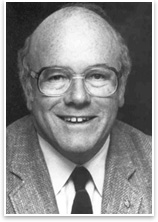
 A Tribute to George M. Notter, 1933–2007 A Tribute to George M. Notter, 1933–2007AIA loses a great friend and leader Summary: George M. Notter Jr., FAIA, the 60th president of the AIA, died December 26. He was 74. “The Institute mourns the loss of an inspired architect, teacher, writer, and leader of the profession and honors the rich legacy this remarkable man has left behind,” wrote AIA Executive Vice President/CEO Chris McEntee in tribute. A founding principal of the firm Anderson Notter Finegold, which later became Notter Finegold & Alexander, he was a leader in planning related to urban areas, the design of new structures in urban areas, and the adaptive use and preservation of historic buildings and districts. Nationally known as a pioneering preservationist and creative enthusiast of adaptive use, Notter is also recognized as an early advocate of sustainability and urban regeneration. An active member of the AIA since the mid-1960s, shortly after his architecture registration, Notter quickly became passionately involved in the life of his professional community, first as a member of the Boston Society of Architects’ Professional Services Committee between 1968 and 1972, then in elected leadership roles with the Boston Society of Architects and the Massachusetts State Association of Architects. He represented the AIA New England Region on the national AIA Board from 1977 to 1980. As national AIA vice president in 1981, Notter chaired a national conference in Denver, “Designing for Energy,” playing a key role in placing the AIA at the forefront of the energy-conservation movement in design and construction. A champion for public involvement He carried this public celebration of the built environment through in his professional career as well, serving as principal in charge for such notable projects as:
His civic and community contributions also showed his deep commitment to and involvement in historic preservation. He was the 1978 president of the Society for Industrial Archeology, a faculty member of the Smithsonian Resident Associates Program, and an involved member of the:
Elevated to AIA Fellowship in 1978, Notter was also an Honorary Fellow in the Royal Architectural Institute of Canada and a Member of Honor of La Federacion de Collegios de Arquitectos de la Republica Mexicana. He is survived by his wife, Bett, and two sons, David and Jamie.
|
||
Copyright 2008 The American Institute of Architects. All rights reserved. Home Page |
||
news headlines
practice
business
design
Additional details can be found on a blog written by George Notter’s son, Jamie.
